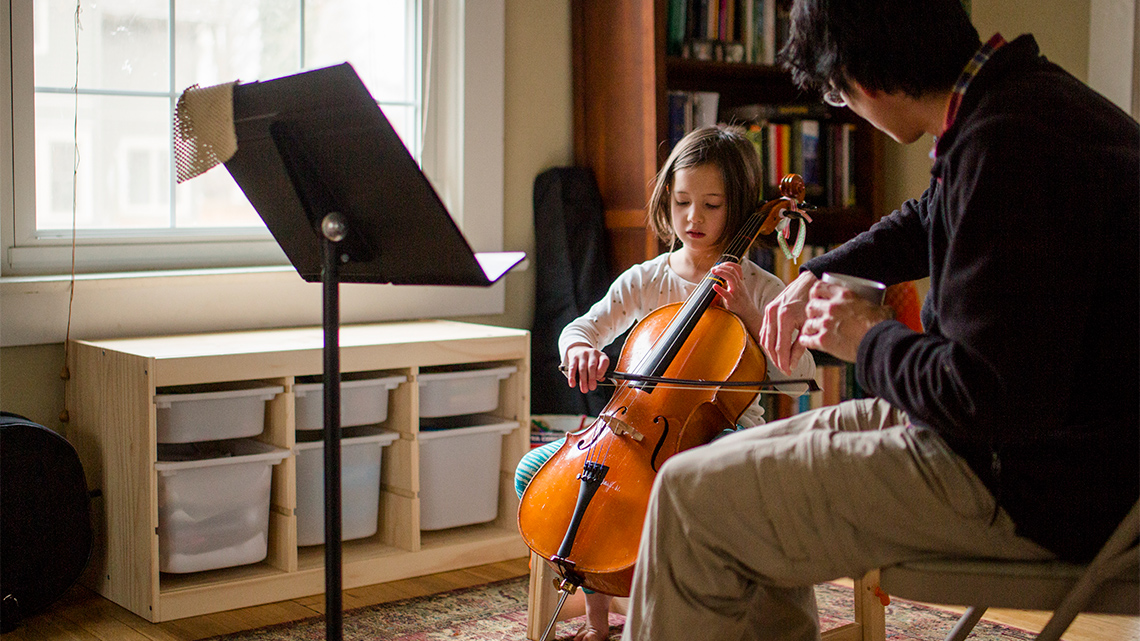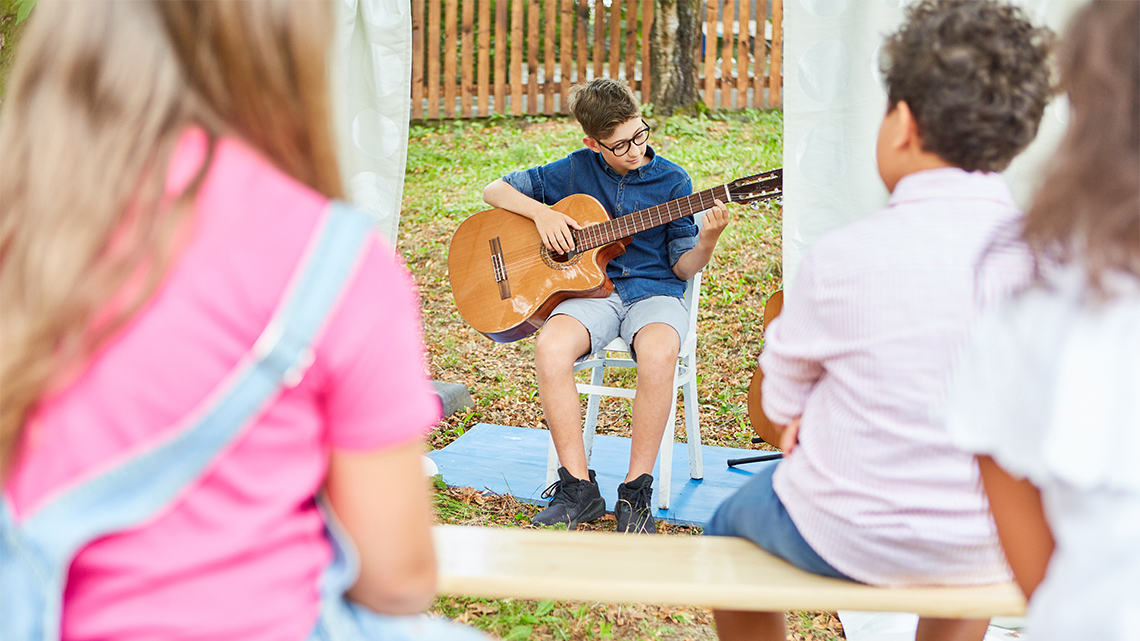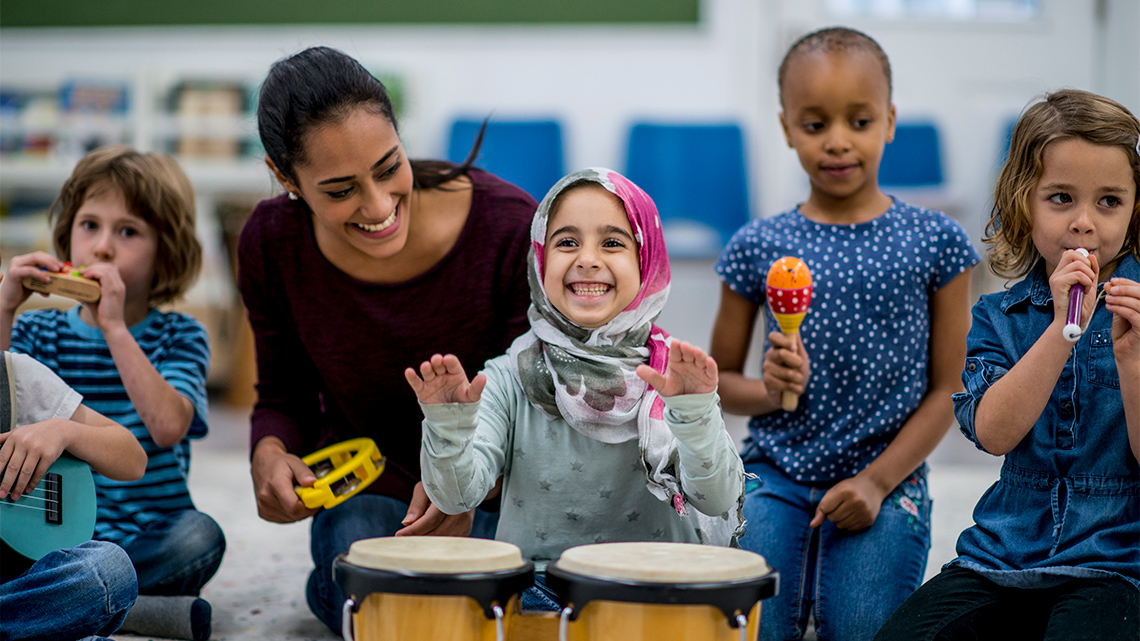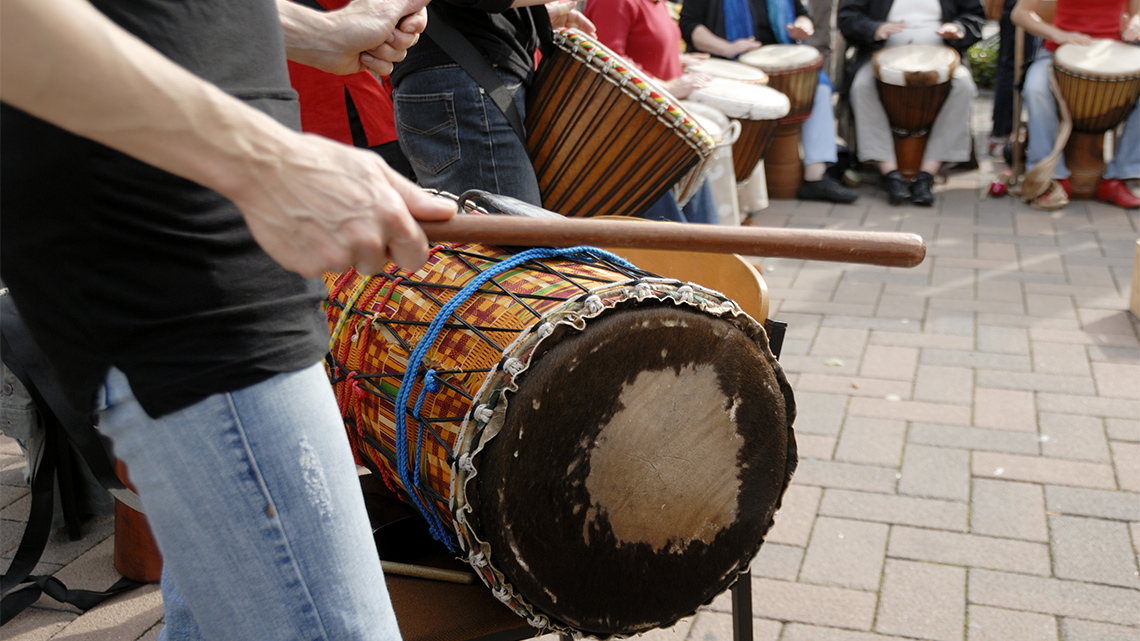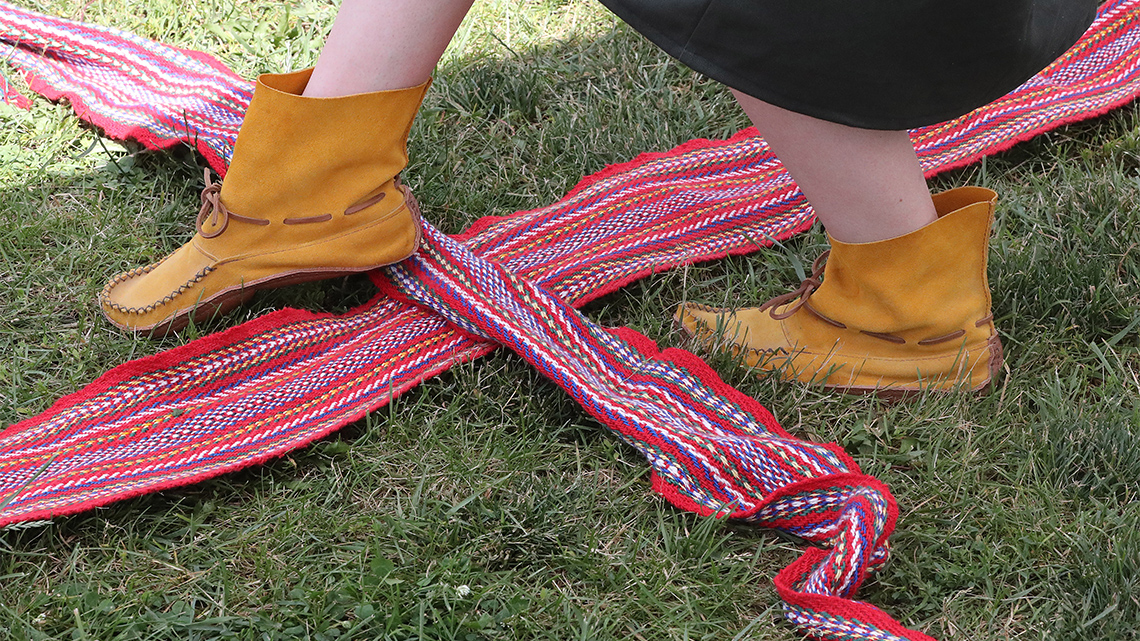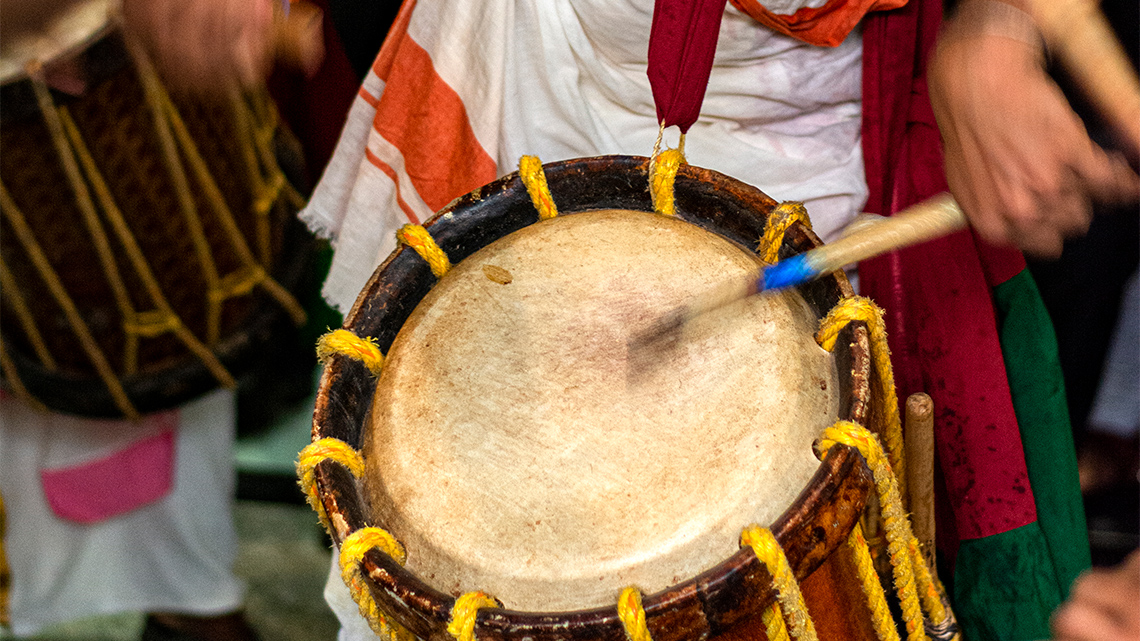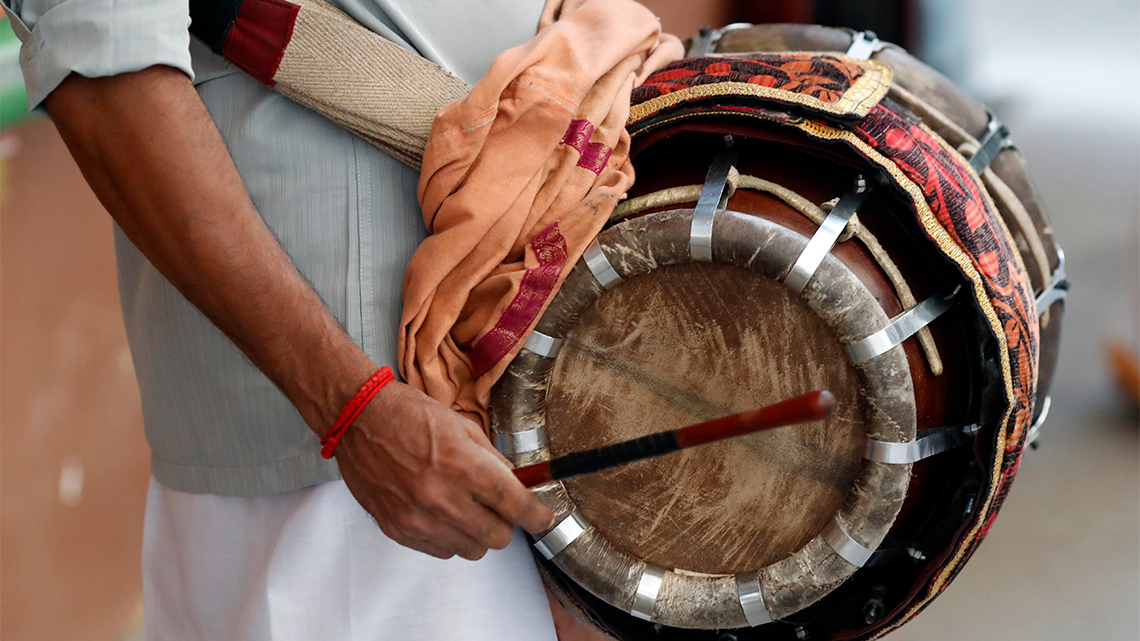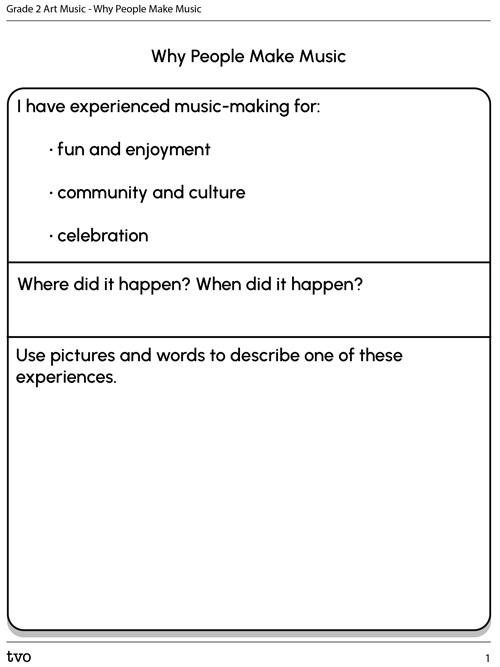Minds On
Today’s vocabulary
Press the following tabs to access today’s vocabulary.
Let’s get started!
Explore this video clip of Morgan and her dad.
Morgan is from a Métis community in East Selkirk, Manitoba.
Why do you think Morgan and her dad are making music?
Action
Get ready, get set…
Task 1: Why do people make music?

Two teachers talking. The first teacher says:
There are lots of different reasons why people make music.
The second teacher responds;
People make music for fun. Sometimes people make music to represent their community and culture. People make music at celebrations all around the world.
The first teacher says:
Let’s explore some of these different reasons people make music.
The second teacher responds:
As you explore the examples, think about music in your life. Do you make music for any of these reasons?
Music for fun and enjoyment
Music is one of the ways people can express themselves and have fun! This might include making music, feeling the sounds that they create, or listening to music.
Explore the following examples.
Music for community and culture
In the community people come together to play, create, and enjoy music.
Gatherings can be big and small. When people gather, they might dance, celebrate, or meet new people. At gatherings, people can also connect to their own cultures as well as different cultures and traditions outside of their own.
Explore the following examples.
In First Nations, Métis, and Inuit cultures, music is important to daily life. It reflects the traditions and beliefs of a community. Each community has their own traditions, types of music, and meanings and teachings passed down with their musical traditions. For example, in Métis culture, jigging music, like the “Red River Jig,” brings people together to dance and celebrate. They celebrate life, their culture and the strength of their communities.
One of the images you explored was a dancer performing the Sash Dance. It is an example of a popular Métis jig.
Music for celebration
Music is important to different celebrations including seasonal festivals, weddings, and parades.
Explore the following examples.
Harvest festivals
A harvest festival is a celebration of nature and the food that is grown on the land. Many communities around the world give thanks for the harvest, and seasons changing. They often include music in their celebrations.
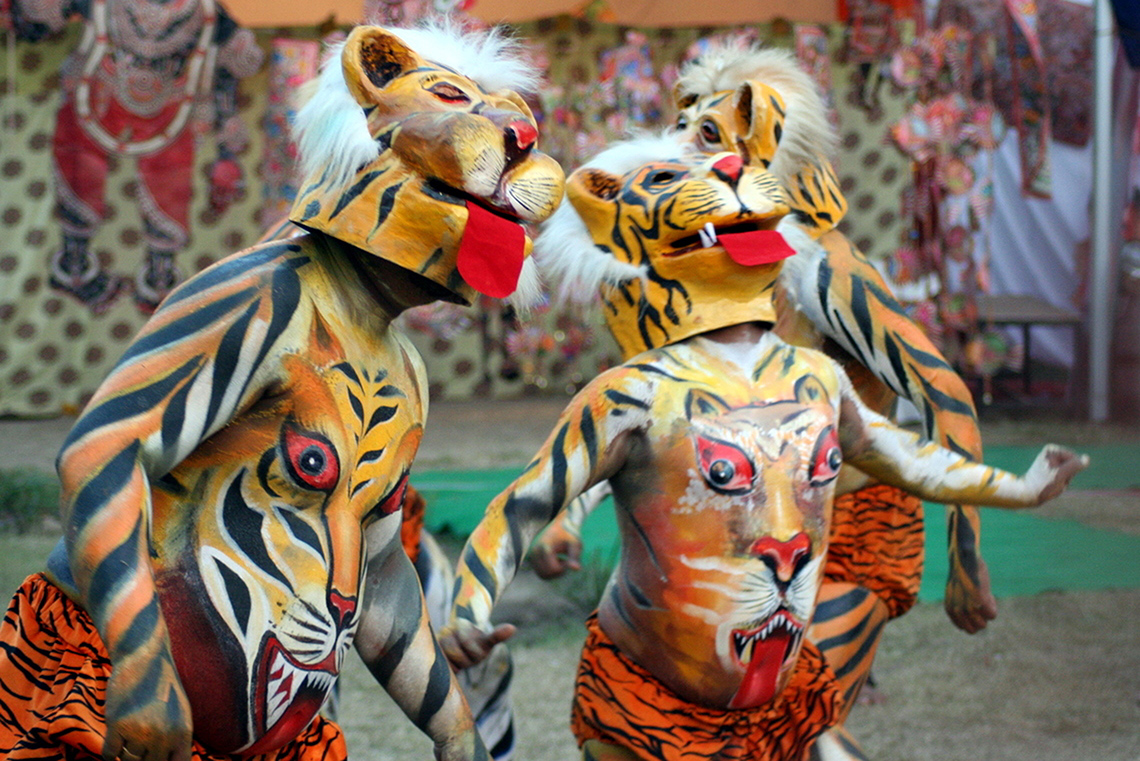
In Kerala, India, there is a Hindu harvest festival known as Onam. It is an important celebration for the people who live in Kerala. It is celebrated every year. People celebrate by praying, spending time with friends and family, and joining in different activities including dances, games, and The Snake Boat Race.
The Tiger Dance, or Pulikali, is one of the dances performed at Onam. The beat for the dance is played on instruments like the chenda and thakil or thavil.
Source: http://www.onamfestival.org/onam-rituals.html
Weddings
A wedding is a ceremony that happens when people get married. Wedding traditions are different around the world!
Music and dancing can be important at weddings. Music might be played, and guests might sing or pray together. There is often an opportunity for dancing. There are many traditional songs and dances that are experienced at weddings.
In Greece, there is a popular song played at weddings called “Sirtaki”. It is danced in a row or in a circle. The dancers put their arms on the shoulders of the person beside them. The music begins slowly but then gets faster. The dancers follow the music.
Explore this video entitled “Sirtaki” to learn more about the dance.
Pride Parade
Like many parades around the world, the Pride Parade is a celebration with music, floats, and performances that are connected to a specific community and history. Many communities around the world celebrate pride, love, and family.
The event is a celebration of the 2SLGBTQI+ community, which stands for Two-Spirit, Lesbian, Gay, Bisexual, Transgender, Queer, Intersex people. The Pride Parade is a colourful event that includes costumes, flags, rainbows, dancing, and music that is played and performed by people in the streets.

Families are diverse and unique. It is important to remember that there is no one definition of a family. A family includes anyone that is important to us, and all families are special.
Go!
Task 2: Identifying why people make music
Return to the video clip of Morgan and her dad.
Why do you think they were making music in the video?
Are they making music for similar reasons to any of the other styles we explored?
How are their reasons for making music unique to them as Métis people?
Record your thoughts digitally, orally, or in print.
Explore this Raven’s Quest video about Morgan and her dad.

Two teachers talking. The first teacher says:
Morgan really enjoyed playing with her dad in the video!
The second teacher responds:
Why were they making music?
Press ‘Answer’ to learn why they were making music.
They were making music for the elders in the community.
The fiddle is also an important part of Morgan’s Métis culture. Morgan and her dad were sharing their culture with the elders in the community.
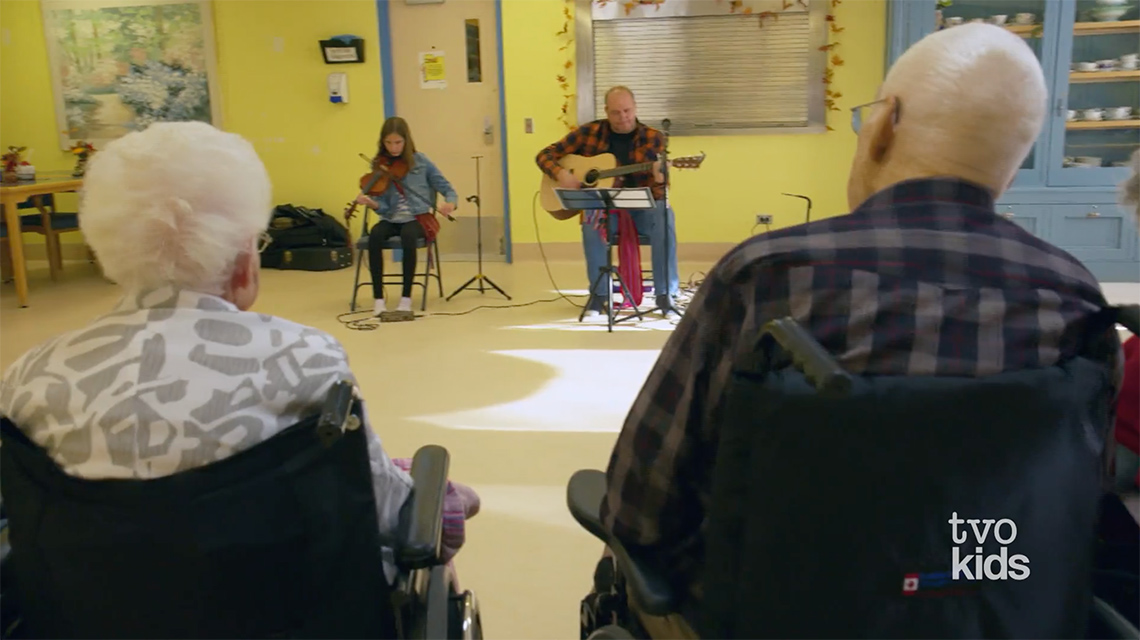

Two teachers having a conversation. The first teacher says:
Did you notice something special that Morgan and her dad were wearing during their performance?
The second teacher responds:
I didn’t notice. What was it?
The first teacher says:
I think they were both wearing a colourful sash! A sash is a piece of cloth that is sometimes worn around the waist, like a belt.
Press ‘Answer’ to learn what Morgan and her dad were wearing.
Morgan and her dad were wearing a Métis sash.
The Métis sash is a colourful finger-woven belt. It is an important symbol of the Métis people their culture. Different Métis communities may have different colours of the sash such as blue, red, or green to reflect their own unique community history and events!
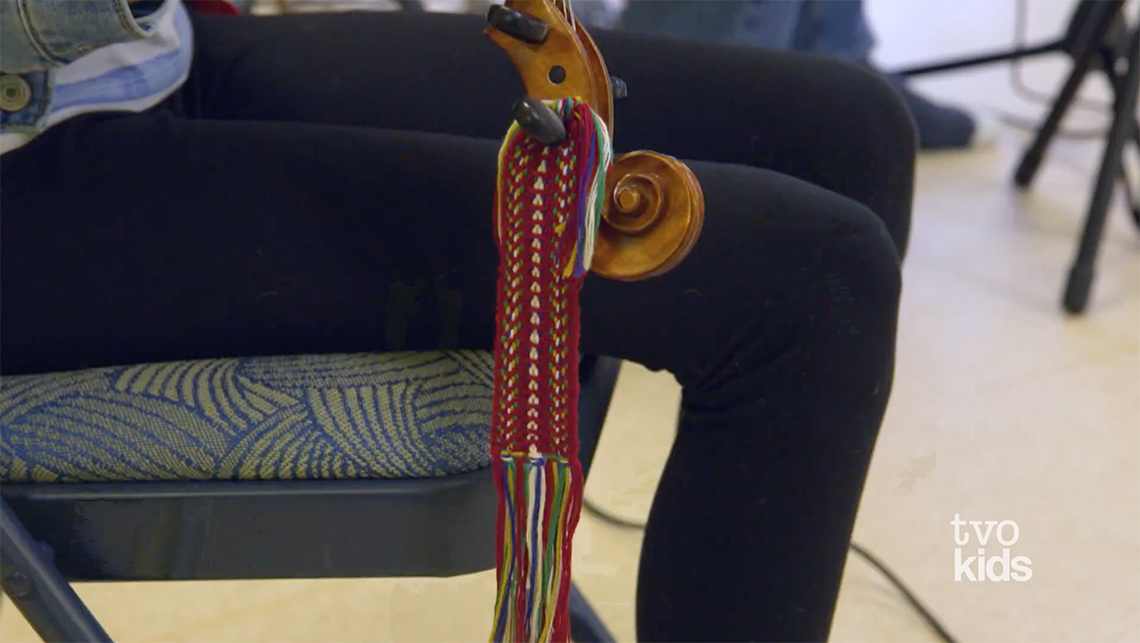

Two teachers talking. The first teacher says:
Morgan and her dad make music for fun and to celebrate their culture!
The second teacher responds:
That’s right! People make music for different reasons!
Consolidation
Putting it all together

Use the following questions to reflect on your learning.
I have experienced music-making for:
Where did it happen? When did it happen?
Use pictures and words to describe one of these experiences.
Complete the Why People Make Music chart in your notebook or using the following fillable and printable document. If you would like, you can use speech-to-text or audio recording tools to record your thoughts.
Reflection
How do you feel about what you have learned in this activity? Which of the next four sentences best matches how you are feeling about your learning? Press the button that is beside this sentence.
I feel…
Now, record your ideas about your feelings using a voice recorder, speech-to-text, or writing tool.
